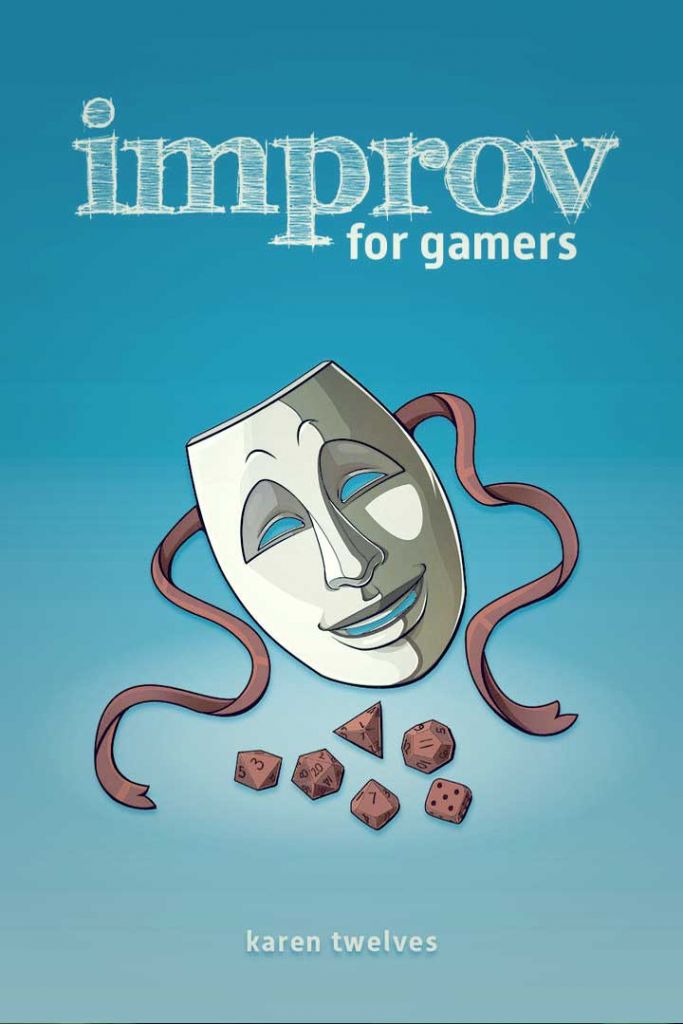How to start a tabletop RPG session
Tips for starting an RPG session
At the start of each gaming session, there is this one special moment. The conversations about movies, families, and work life die down and the players turn their heads to the GM with expectant eyes. It feels a bit like when the lights are dimmed in the cinema, or like when the curtain rises at the theater.
The first scene, the first few words of the GM now lay the foundation for the atmosphere of the whole session. Despite this, most GMs still start with the plain old mantra, “You find yourself in…” With just a little effort, you could create a much stronger introduction for your roleplaying game session and set a memorable mood to immerse your players. This article will show you how.
Impact: ★ ★ ★ ☆
Difficulty: Beginner
Time to read: 9 min

Take some time to settle down before you start playing
Before you start your game, always give your players enough time to say hello to each other. This means sharing personal news and talking about whatever the hot new Netflix series is and such. Snacks and drinks are being prepared, phones are (hopefully) being switched to silent mode. It’s a kind of ritual to set aside the daily routine, relax, and gradually transition into the gaming session. And of course, there’s always someone running late for the game.
That’s why you should schedule the first 30 minutes of your session for everybody to settle down and prepare for a tabletop RPG game. This ensures you have the undivided attention of your players. Not having this transition phase would make it difficult for the players to focus on your story and the atmosphere.
Define which topics are okay for the group
Check in with everybody at the table (yourself included) and ask if there are any topics which they don’t want in the story. If you know each other well, then this step can usually be skipped. But when there are new players, it’s crucial to ask them if any subjects are taboo.
“Lines and Veils,” by Ron Edwards, is a great technique to cover this matter. “Lines” are no-go topics, and “Veils” are subjects that may be part of the session’s plot but should not be covered in great detail.
Defining which topics to exclude is a great group exercise to create a safe gaming atmosphere. It helps anticipate inconvenient situations where a player might feel uncomfortable or even choose to stop playing.

5 techniques for starting a tabletop RPG session
As soon as your players have physically and mentally settled down, it’s time for your big moment as the GM. In the next couple of minutes, you will have the undivided attention of your players. Now you’re going to set the stage for the mood of your story. There are a few techniques for this special moment, which we’ll discuss below.
1. A Moment of silence
A very powerful and yet simple technique for marking the start of your RPG story is the moment of silence. Have everyone lean back and enjoy half a minute without any sounds. This resembles a short meditation and increases the concentration of everyone around the table. To symbolize the start of this moment, you could light a candle or turn an hourglass as a gimmick. Quiet and discreet background music can improve the atmosphere in this situation too.
Some GMs say a few words to their players, which they can reflect on during this time. This can be a summary of the last session or information about the story setting. You could also ask your players to put themselves into the minds of their characters. This could work like this: “You’re Clive, the insurance detective. Why are you chasing these shady moonshiners into the dark forest? What’s your opinion of your fellow companions?”

2. Listening to Music
To build up atmosphere at the start of your gaming session, listening to suitable background music without talking also works well. This could be dark, sustained saxophone melodies for a noir setting or ambient nature sounds for a story taking place in the wilderness. Music inspires your players’ imaginations and helps them to relax and get into the mood for your story.
The music track should ideally be one to two minutes long. Longer tracks will put the patience of your players to the test, as they are waiting for the game to begin. For campaigns that go on for more than a single evening, using a recurring music track as a theme is a great option.

3. Monologue of the GM (the classic way)
A monologue by the GM is a very common approach for starting a roleplaying session. It involves the GM describing the setting, introducing the characters, and explaining the initial situation regarding the story. A good storyteller will manage to establish a captivating atmosphere for their players.
But make sure you don’t babble on for too long. Usually, 2-3 minutes is a good length of time. Longer monologues are difficult to listen to and instead of creating an intriguing atmosphere for your players, they will start to get bored. You’ll see your players itching to participate in the story when your monologue is too long.
4. Warm-up exercises from Improv
Improv (short for “improvisational theater”) offers a wealth of warm-up games to stimulate the creativity of your players. They let you dive into different characters or settings on the fly and urge you to come up with conversations without time to prepare. These improv techniques are incredibly helpful for loosening up your players for your game and for attuning to each other.
Check out “Improv for Gamers,” by Karen Twelves. It contains a number of improv warm-up games, especially for tabletop RPG sessions. It’s a great read, and I highly recommend it. Get it on DriveThruRPG.
Also take a look at the Improv for Gamers Youtube channel. You’ll find some great videos there, showing how the different improv techniques work.
Also take a look at the Improv for Gamers Youtube channel. You’ll find some great videos there, showing how the different improv techniques work.
Improv warm-up exercises are particularly useful for games with shared narrative (indie games, PBTA systems). I was impressed how well this worked for my different Monsterhearts groups. It really got their creative juices flowing.


5. Character Selection (for One-Shots)
When playing a one-shot, the selection of the pre-generated characters can be a neat introduction to the story. For this, the GM should outline the available characters and explain their backstories and motivations. Have the players read through the backstories themselves so they can put themselves into the position of their new characters. Additionally, a good backstory will indirectly describe the story setting to the players.
Of course, the selection of the characters itself can be spiced up a bit. You could auction the characters off to the players and have them pay with bennies or fate chips (depending on the system used). Or the GM could recommend characters to specific players, trying to match everyone’s playstyle to the most suitable role available. This often makes the players very curious as they ponder why they were assigned a certain character. Of course, this only works if the GM knows the players well enough.

The most important part of a gaming session is the first 10 minutes. So, make them count.
Combining different techniques for starting your RPG session
What has always worked best for me when starting an RPG session is combining different techniques. Immersive background music followed by a short introduction lets the players smoothly transition into the right mood of the story. Especially for one-shots or sessions with new players, you’ll always need a short explanation of the setting to stake out the scene and establish players’ expectations.
I suggest testing different styles of introductions for your own RPG sessions. Let us know what works best for you in the comments below. Please feel free to share your biggest intro scene fails – those are usually very informative!

Never start with a combat scene
Here’s a common tip in various gamemaster guides: “Throw your players right into the fray by starting your session with a fight scene. This gets them excited immediately.” Sounds intriguing, but it often backfires.
At the beginning of a gaming session, the players are not fully immersed in the atmosphere. Having them deal with complicated or abstract combat rules will often overwhelm them and it will ruin the immersion you wanted to build up. That’s why I would absolutely not recommend starting an RPG session with a combat encounter. Don’t waste your players’ attention and energy on an orgy of dice rolls.
Starting in medias res with a catchy scene to build up an atmosphere is a good thing. A heist or infiltration scene would work for that, creating suspense or pressure to get the players going. But I have never seen a combat scene work out at the beginning of a session. I also can’t think of many Hollywood movies, which start with a fight scene or gunfight, without giving some context first. Even with a movie, you need to introduce the audience to the setting and story before diving into action scenes.
Summary: Make the first few minutes of your game count
The introduction of an RPG session provides a lot of potential to create the right atmosphere for your game. With the right technique, you’ll increase the anticipation of your players for the story – similar to what a teaser does for a movie. And you’ll help them to fully immerse into the setting. If you asked me about the most important part of a gaming session, I’d name these first 10 minutes of your session.



